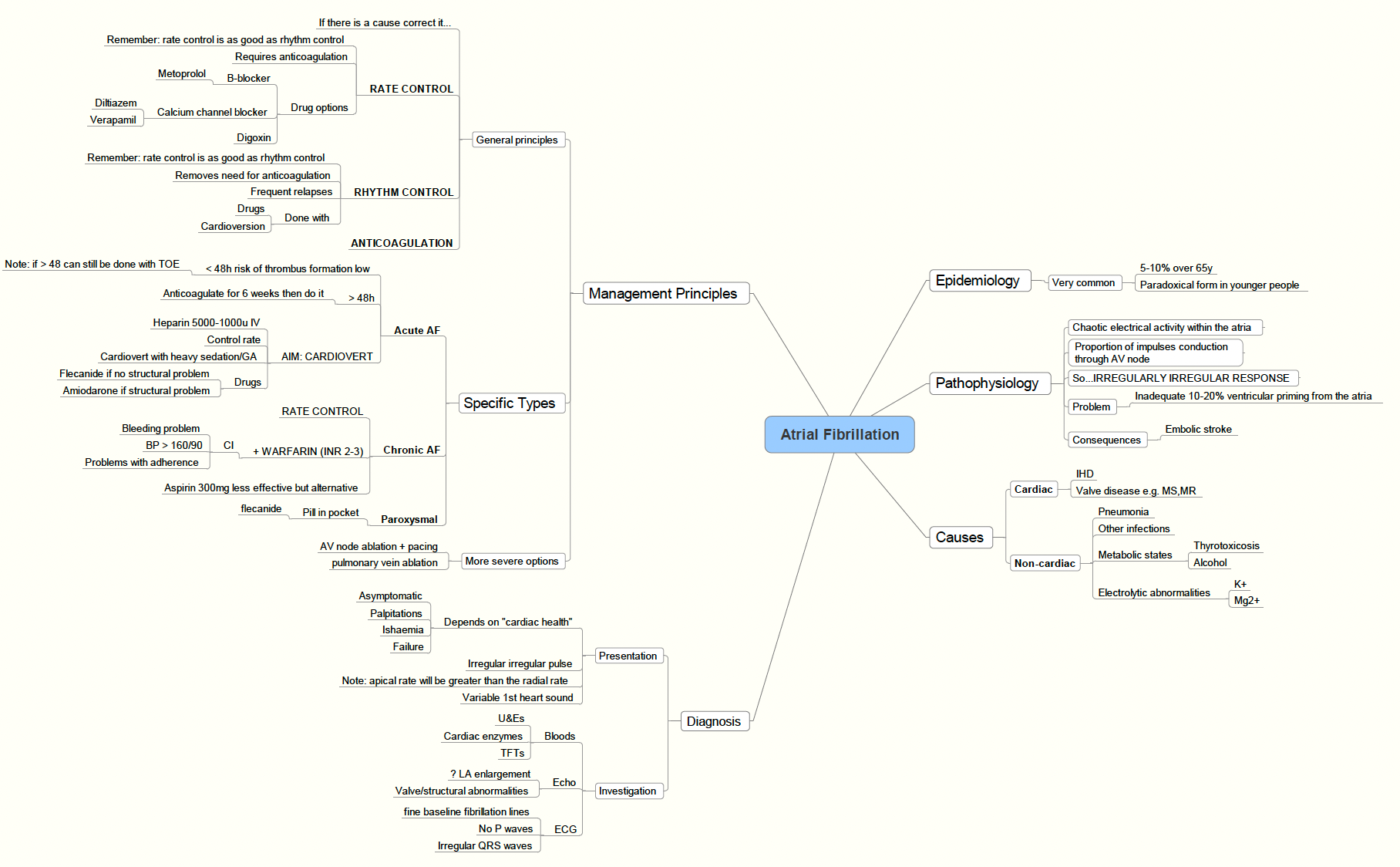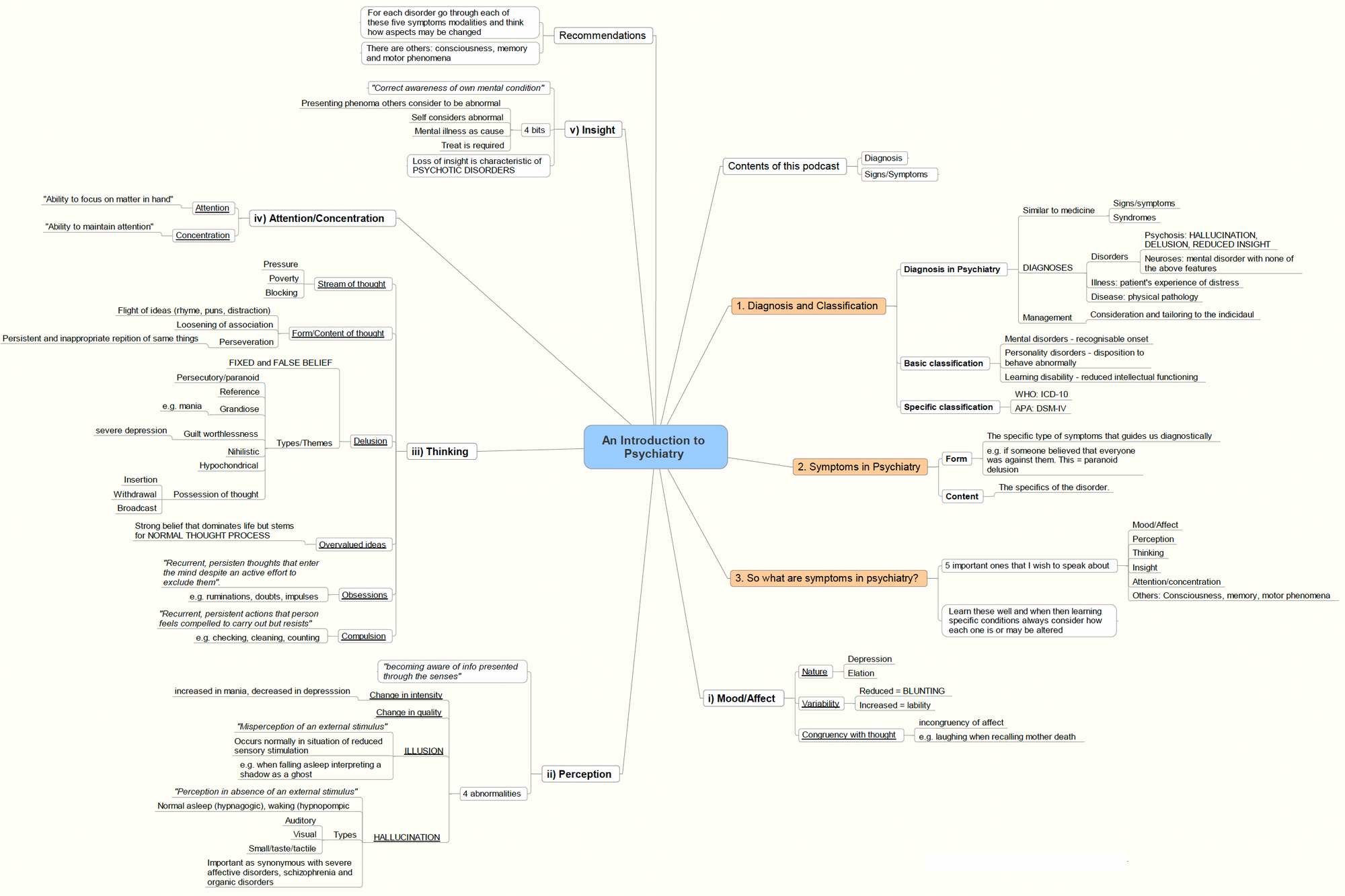The Perfect Mind Map - 4 Step Framework
I want to talk about mind maps or spider diagrams as they are an effective tool for learning efficiently but the problem is lots of people don't actually know how to use them correctly and end up wasting lots of time so if you think you've mastered mind maps you might be kinda wrong.
Mind mapping is a spatial way of breaking down complex topics into actionable and digestible parts. Mind maps are spatial because every piece of information you're working with is laid out in a visual map format and I use this very versatile tool for everything from planning essays, to strategizing business deals to designing software products and I even used mind mapping when learning my TED talk.
The basic idea of a mind map is that you have a concept in the middle of your page. Then you have the branches of that concept going out from the middle, and then you have the subcategories of that branches going out from that. I quite like mind maps and the reason I like them is because they help me get a broad understanding of what the content that I'm looking at is and they allow me to quickly build relevant connections between what I'm learning or planning and this allows me to better organize new knowledge and encode what I'm learning.
-4.png)
I'm going to be talking about how to build the perfect mind map using some evidence based learning principles as building mind maps is actually fairly technical and lots of people use them incorrectly so I'm going to give you some guidelines and walk you through how I build and use mind maps to help me learn and give some examples at the end. But first let's look at some of the evidence behind mind mapping to give us some context into how to use it.
The Evidence Behind Mind-Maps
Now one thing I want to make clear up front is that mind mapping is great for organizing knowledge at the encoding end of learning and it also helps with memorization of things like essays or talks or explaining complex ideas in simple terms which are broken down by the branches of the diagram. You still need to use active recall and apply what you are learning so mind maps are a tool and should not be used alone.
That being said a meta-analysis published in The Anthropologist in 2017 reviewed a number of studies into the usefulness of mind-mapping for learning and the study concluded that:
"Mind mapping has a positive effect on academic achievement, attitude and retention". But how does it actually work and how should mind-mapping actually be used. Well to keep things simple mind-maps basically work by making learning meaningful, breaking complex topics down into chunks and providing visual mnemonics all of which help to reduce our cognitive load through better encoding.
1. It Enables Meaningful Learning
Looking at enabling meaningful learning first; a 2007 study from King's College London into mind-mapping found that mind-mapping helps create meaningful and relevant learning, something that leads to better encoding and better understanding of a topic.

The researchers defined meaningful learning as change, which is “a consequence of the integration of new material and the prior knowledge structure.”
The study concluded that mind mapping helps to create this meaningful learning because it forces students to find connections between new knowledge and existing knowledge. By mapping disparate pieces of knowledge around a central topic, students can form connections between what they already know and what they’ve just learned, an exercise that leads to meaningful learning.
2. It Helps with Memorization and Retention
And mind-mapping also helps to with memorization and retention of knowledge. Mind mapping is a similar technique to the method of loci, and as W. Martin Davies writes in his study “Concept Mapping, Mind Mapping and Argument Mapping: What are the Differences and Do They Matter,” it provides the same benefits for memorization and information retention as memory palaces do.
The study states that: “Diagrams are more easily stored in memory than other kinds of representational formats. Maps allow the separate encoding of information in memory in visual and well as propositional (written) form.”
Davies also argues that meaningful engagement is a critical factor in promoting deeper learning. Unfortunately, some of the most common learning methods—such as listening to a lecture or reading a textbook—do not create meaningful engagement and as we know reading and highlighting or passively listening are just not efficient ways to learn. Mind mapping, on the other hand, does create meaningful engagement because learners actively engage in the process of brainstorming, generating ideas, and connecting concepts together while reviewing and developing mind maps.
In addition to recommending that teachers use mind maps in the classroom while teaching, Davies suggests having students create mind maps on their own that can be used to assess learning—and to compare their mind maps with those of their classmates for additional meaningful learning activities. As you are presented with a blank page you are actually forced to use active recall and prime your existing knowledge when building out your mind map from a central topic.
In another study—from the Queen Mary University of London Medical School—that analysed the impact of using mind-mapping on 2nd and 3rd year medical students researchers found that studying with mind maps helped boost retention by 10-15%. Interestingly compared to traditional study techniques the study also found that student motivation for using mind-mapping was lower than traditional methods which might explain why some people use it and then give up or maybe don't know when to use it to it's best effect.
For those interested in even more evidence for mind-mapping I've also added a link to a summary of the research here too.
So let's look at some principles you can apply to when you create a mindmap and then I'll show you how I use mind mapping to its best effect.
How To Create A Mind-Map

So I'm going to give you a quick evidence-based framework using some things that help promote good encoding and I found that when a learner applies these principles the mind map overall tends to be pretty good. And this framework is basically four principles mapped to good encoding and it's Chunk, Organize, Connect and Doodle so let's begin with how chunking fits into mind-mapping.
Chunking
When we have ideas we should be aiming to organize them into chunks or blocks so this organization of data into these blocks allows it to make more sense for us and simplifies the knowledge. Instead of trying to learn 30 different things, which can be a lot for us to take in we are chunking these into categories that allow us to create these connections and it makes lots and lots of smaller concepts fit together into larger blocks. Chunking allows us to breakdown complicated topics into smaller chunks and also group together smaller topics to aid learning. For example when I use mind-maps to learn essays for exams or talks that I'm giving I will collect together 2-3 key points into a chunk which then flows out from my central mind-mapped topic and I'll also then break these points down further as needed based on their complexity. These chunks or blocks then become the paragraphs of my essay or talk and the smaller points become key sentences or facts.
Organize
The method of loci or memory palaces work by connecting things you are trying to remember with objects or personal memories to help your brain file things and retrieve things more easily. One of the problems with creating standard written notes or writing down paragraphs or text is that these can often blend together in your mind making it difficult to visualise and retrieve the content. Mind-maps however can better organize what you are learning by using colours, connectors and grouping chunks of information together to essentially mirror the connections in you brain.
When I was studying for my medical finals I would often visualise lecture slides or pages in a textbook to help me locate and remember information. The problem here is that remembering left-to-right black and white text takes quite a bit more cognitive load than organized, visual mnemonics, like say for example if the symptoms of a disease are outlined visually in a mind map.
Connect
The next part of the framework is to connect the points of any mind-map to existing knowledge. This is a step that most people forget as mind-maps are often used incorrectly to just translate existing notes into mind-maps which in my opinion has limited benefit. rather than just like-for-like transcription if you make a conscious effort to close your book and just creatively think about the topic and how you might break things down you will begin to use active recall and flesh out topics naturally. You can then open your book or research any source material and add new content on top of this. You can link these new and old concepts together and even inter-link them to each other which is essentially interleaving another proven learning technique. The way that you organize and connect your mind map should also follow a direction. Rather than having things scattered around the central topic we're actually arranging these connections in a way that has a specific order.
When you are connecting concepts you're also thinking about how they make sense with relation to each other and their wider purpose to what you are learning. This creates a logical structure which provides a much deeper level of learning than just learning the superficial facts and concepts alone. This directional flow of the mind-map is really important as it.
-4.png)
Doodle
I may have called this step doodle as I'm spending most of my time looking after a cockerpoo puppy but the point of the final step in the mind-mapping framework is that you don't need to restrict yourself to just boxes and lines when mind mapping. You can actually engage the creative part of your brain and add in drawings or doodles of key concepts to reduce your cognitive load further and if there is a concept that is really important take your pen and make it bold. If a connection between blocks is very important make that line thicker and write information along the line itself if it aids your understanding. Doodling is really key here as if you just have text connected to more text the mnemonic benefit is pretty low and it can be difficult to remember. In simple terms making sure key topics are emphasized with thicker borders or colours helps to reduce our cognitive load and simple things like using colour or images to relate to the topic you are learning like red and blue for oxygenated and de-oxygenated blood will help make things stand out in your mind. When we come back to our mind-maps any key colours or highlights will grab our attention and again reduce our cognitive load by helping us to find key, high-yield concepts.
A quick word of warning here; while it's tempting to spend time making your mind-maps look nice and use pencil shadowing or soft palette pantone colours if you go too crazy here firstly it will take up way more of your study time than is needed and if everything is colourful it will actually be tought to see what is emphasized.
So unless you are very artistic and are trying to create some visually stunning mind-maps or notes you are going to sell as a side hustle, try and optimize for highlighting and quick doodles only as anything that isn't focusing on the material you are learning, like colouring things in, isn't going to give you the biggest learning gains and stay productive with your time.
So remember to chunk, organize, connect and doodle when you approach making a mind-map and you'll save time and learn effectively. Next up let's look at when and how I use mind-mapping appropriately and then I'll go through some of my mind-maps in detail.
When and How I Use Mind-Maps
I've used mind-mapping extensively for interviews, memorizing essay and talks and planning out projects and in medical school around 3rd year I also used them for taking notes and mapping out clinical topics I needed to learn.
Whatever the reason I’m using a mindmap it is almost always to help me quickly and effectively plan something out and provide structure and an easy to remember, logical scaffolding to build deeper knowledge on. Increasingly if I'm planning something out with others I'll use a collaborative whiteboarding tools like Miro to collaborate and ideate on key concepts too.
I even used mind mapping when planning out and learning my Ted talk and it helped me to learn an 18-minute talk in less than 2 weeks.
Tools to Get Started Mind Mapping
First up I’m going to talk through my mindset and what I use. I always optimise for speed and try and solve for being productive and efficient when learning so I’m pretty flexible in terms of tools I use when kind mapping. And the great thing about mind-mapping is it’s easy to get started. You just need something to write with and something to write on.
I’ll usually default to using my iPad Pro and Apple Pencil and pretty much any digital note taking or drawing app so I can store and organise things digitally. Notability is pretty solid here but you can use whatever suits you if it’s easy.
I’ll also jot out maps in my journal or on paper using a pen too or even on my phone. If I’m writing in my journal or diary I’ll use the notes section of my best-self journal or my custom journal that I made for my companies and I usually carry one of these sharpie fine tip pens, this one is a point 3mm pen in case you’re interested as I find that makes even my awful doctors handwriting look good.
How I Mind-Mapped Medical School

Before I walkthrough creating a mind-map with some pro tips here is, for example, what a basic mind map looks like. This is the one that I made for learning atrial fibrillation. Now my handwriting was so bad I actually mapped this out on computer whereas now I'd go for handwriting but this is a good one to show you some principles as you can actually read it.
We can see I've got the main topic in the middle and then starting at the 12 o'clock position we have epidemiology then pathophysiology and then causes and so on. So my directional flow is clockwise and logical and for all my mind-maps I'll do this. You can then see I've kind of gone through each section with smaller text branching out form these concepts and chunking things together
You can see that hopefully this gives me an idea of what all the different categories are. A mind map is like where you start with the base of the tree and then you branch out into different things and the branches become smaller and smaller. For example, if we're talking about rate control, I know that's a treatment. I know that other options are rhythm control and anti-coagulation. I know there are drugs associated with rate control.
This is what a mind map that looks like. I think this is great because otherwise, if we looked at the textbook and we looked at rate and rhythm control in the Oxford handbook of clinical medicine or something. We would just have a long list. I think having it in this mind map format makes it really obvious, at least for me in my head, like where the thing fits into the bigger picture. This is something that I'll talk about that I think is really helpful to keep in mind that no one really explicitly tells us that whenever we are learning anything, we want to first understand where it fits into the bigger picture, which goes hand and hand with scoping the subject.

More importantly what you're not seeing here is that when I created this mind-map I was actually testing my own knowledge a looking things up and creating relevant branches like the pathophysiology and understanding why AF occurs which then gives me deeper understanding about what is going on in the disease. So in this instance I'm using the mind-map as a note-taking tool and when revising for exams I'll then challenge myself to recreate the mindmap and ask myself recall questions about the branches. For example I might pull on the threads of my knowledge and ask myself okay so how to beta-blockers work and can I explain this in simple terms. If this is relevant I might then add this to the mind map so I'm building upon my knowledge and using active recall to test myself.
This is just one example of a mind map for a specific disease in medicine and you can use mind maps for anything. I especially like mapping out a course curriculum using a mindmap to help you structure how you are going to learn and so you know what to learn highlighting key topics or your weak areas. Here's one for example from a podcast I was obviously summazing focusing on the curriculum in psychiatry so maybe this was back in third year. This is much more expansive and helps to build structure going down into specific psychiatric conditions and symptoms.

-4.png)


